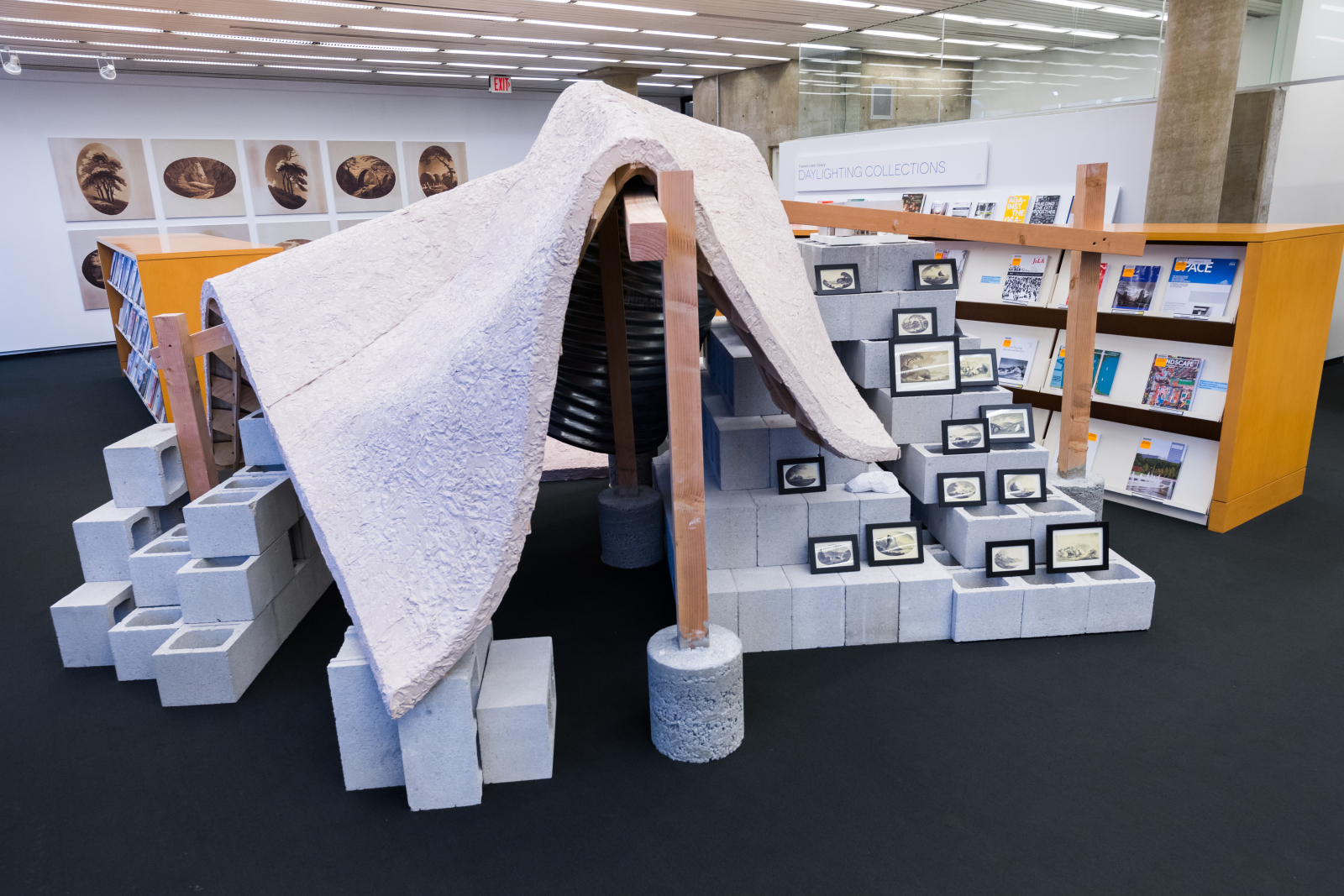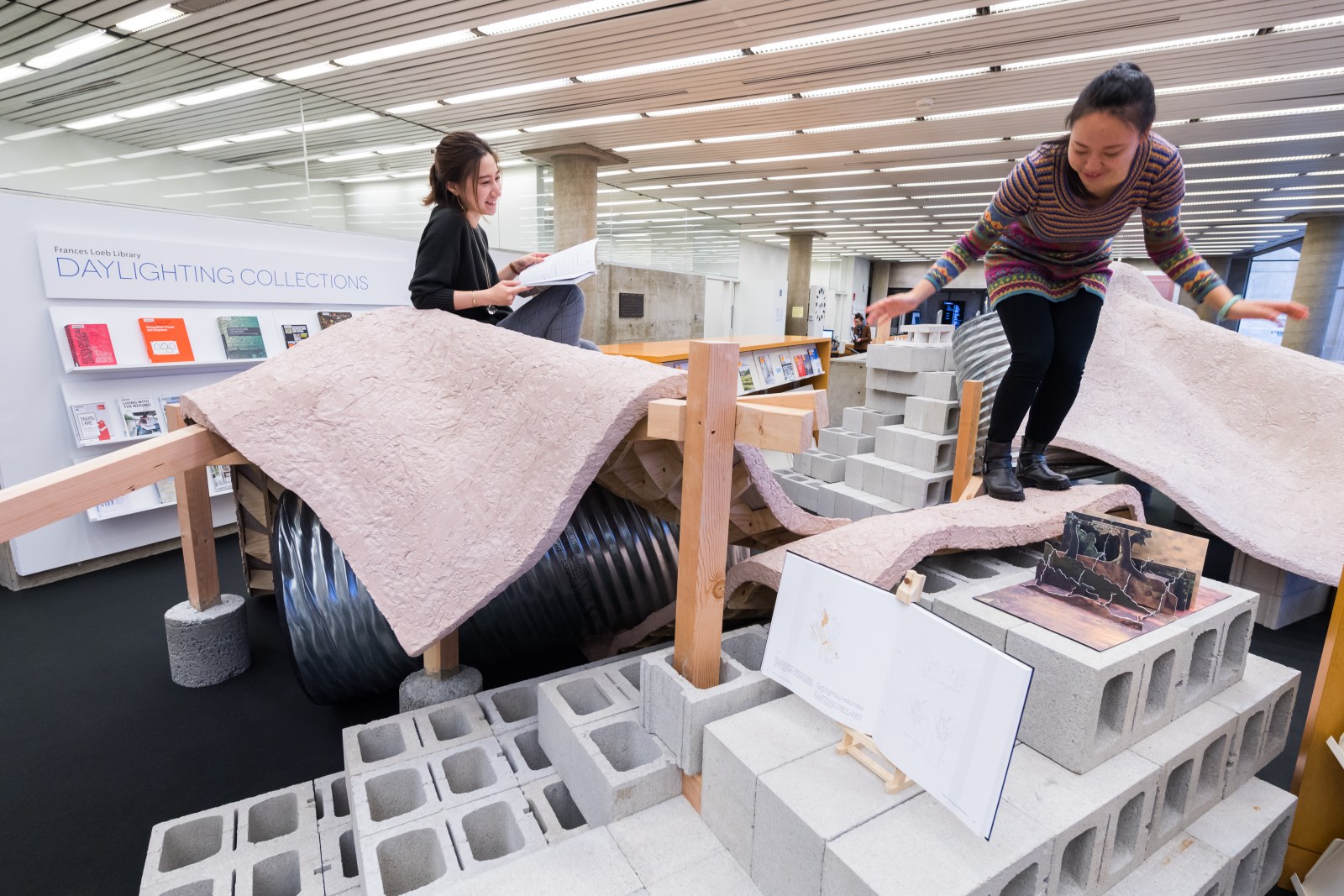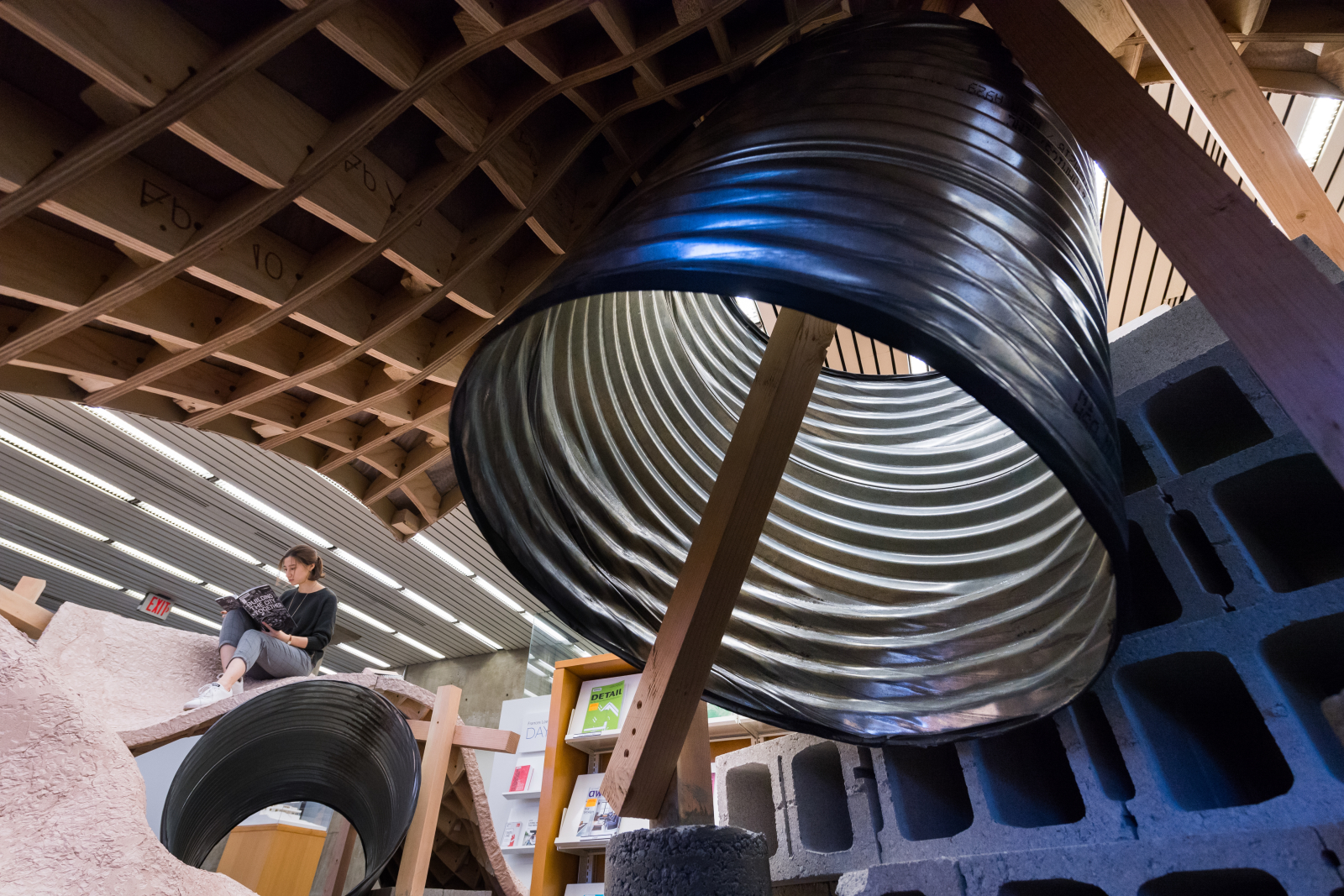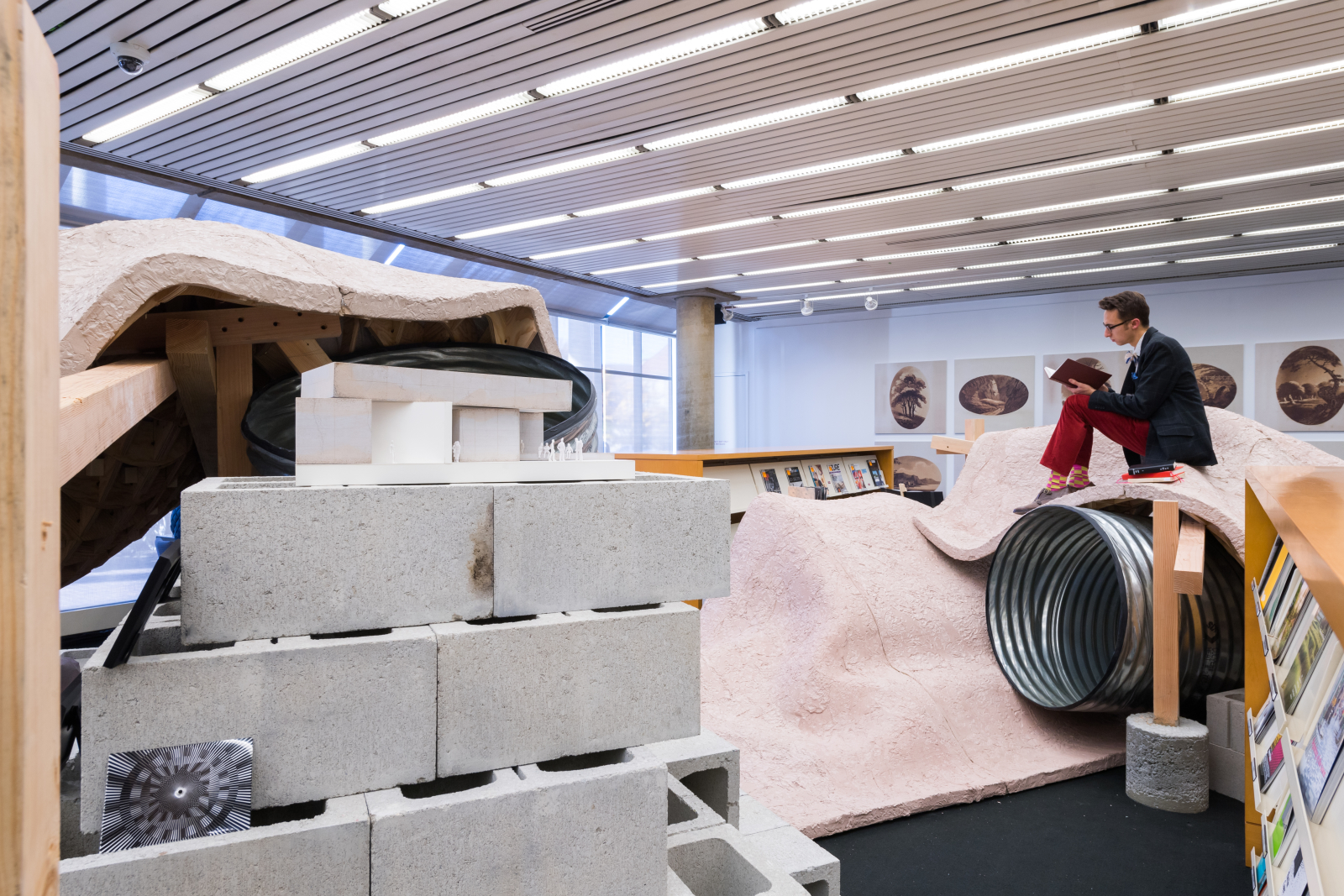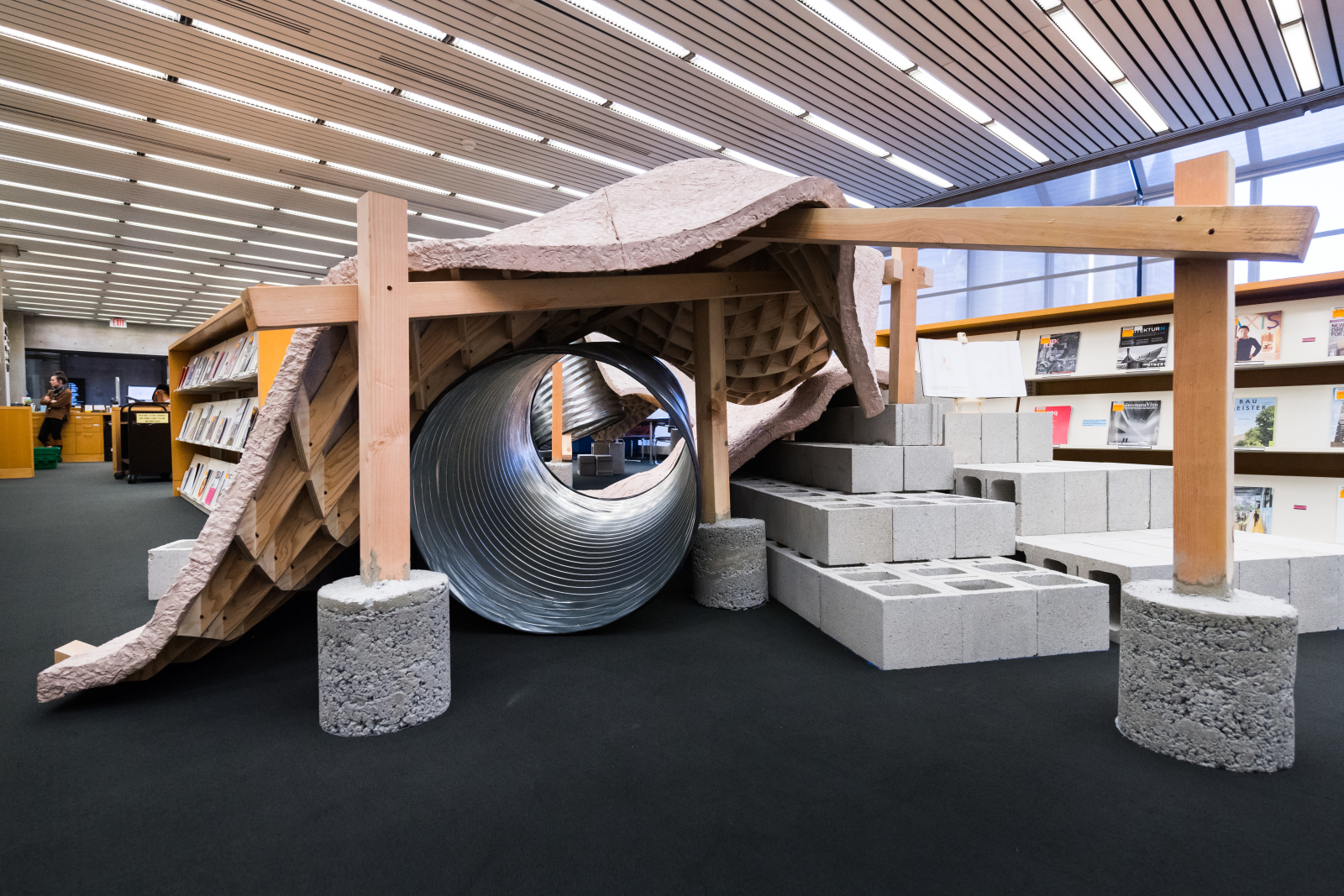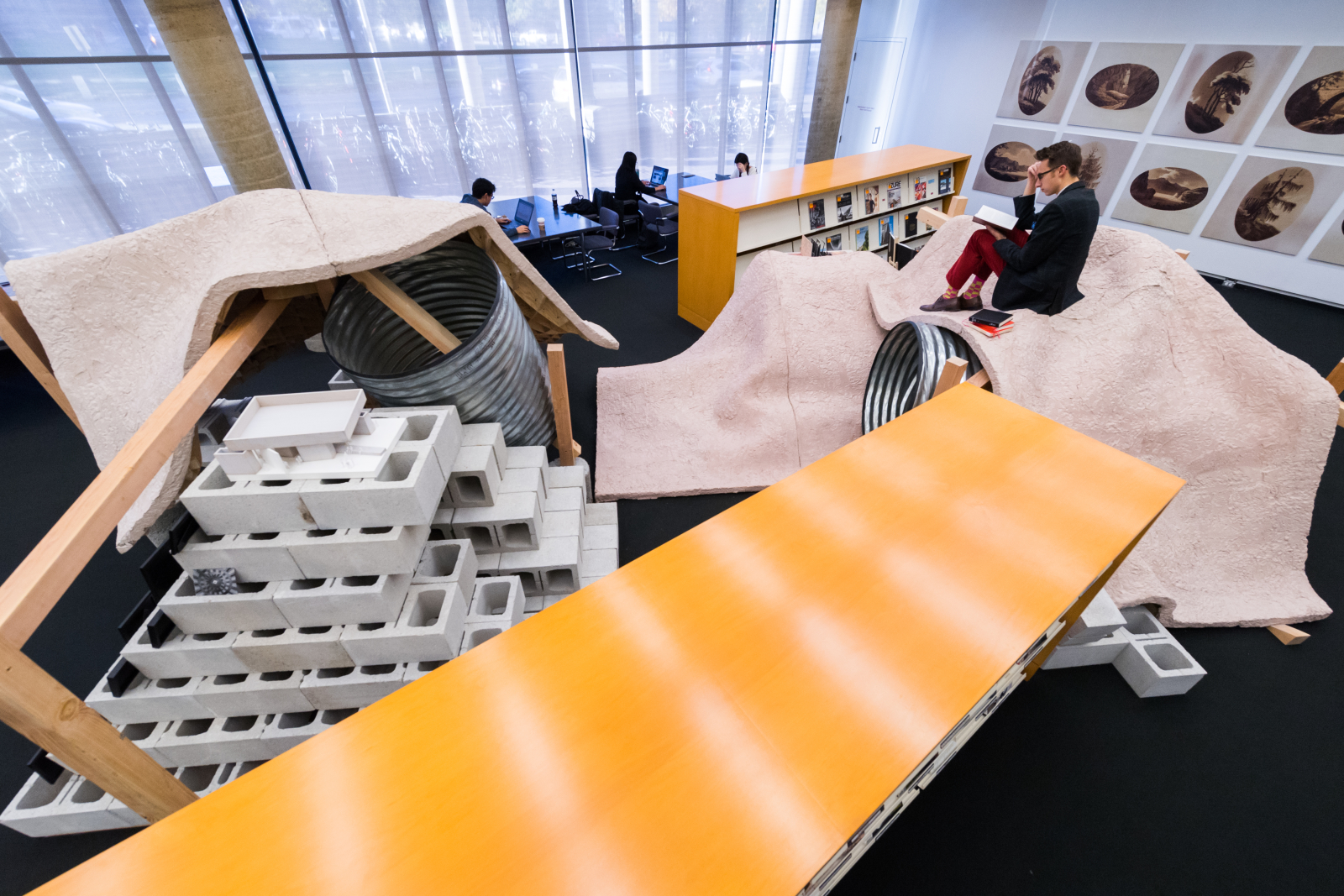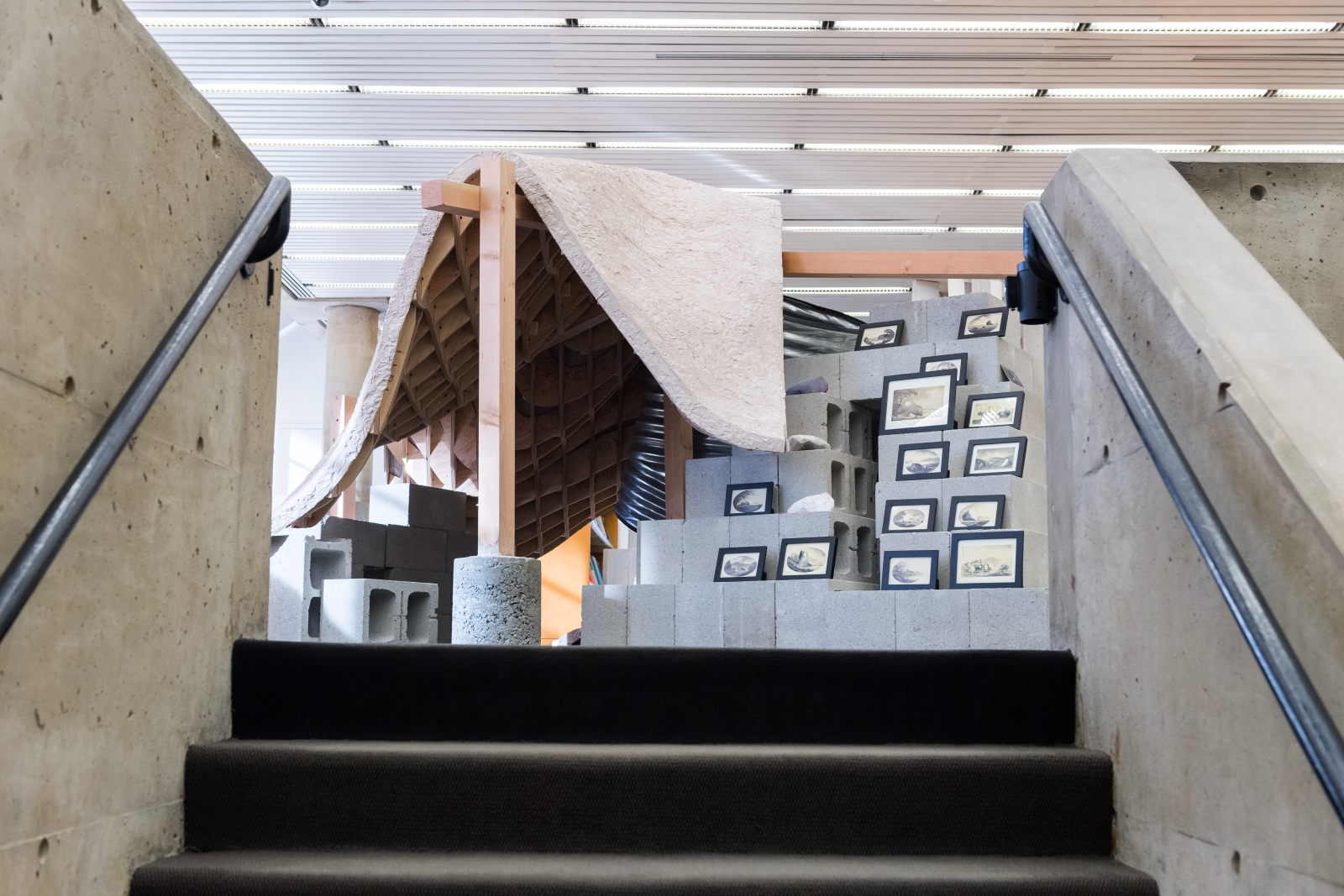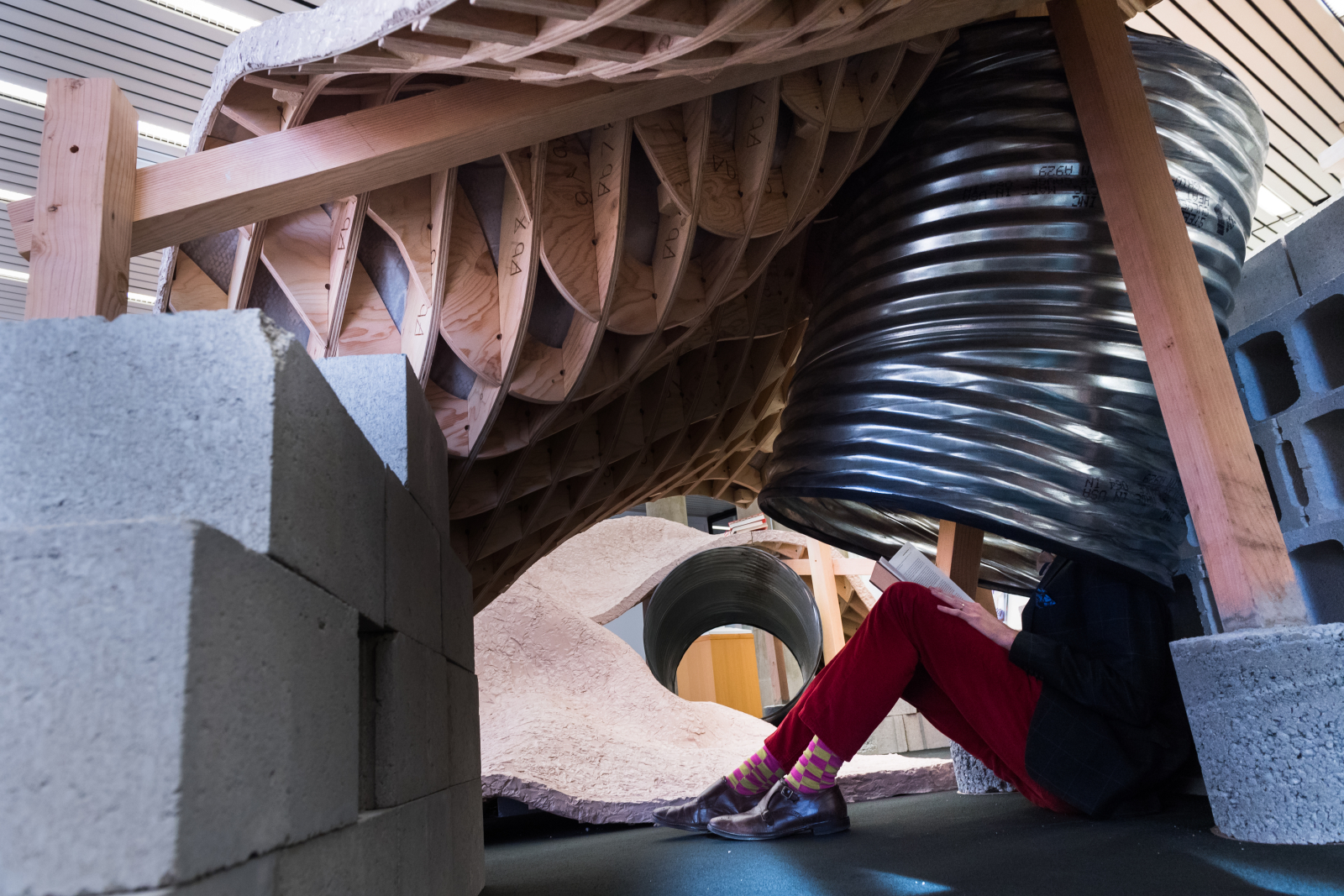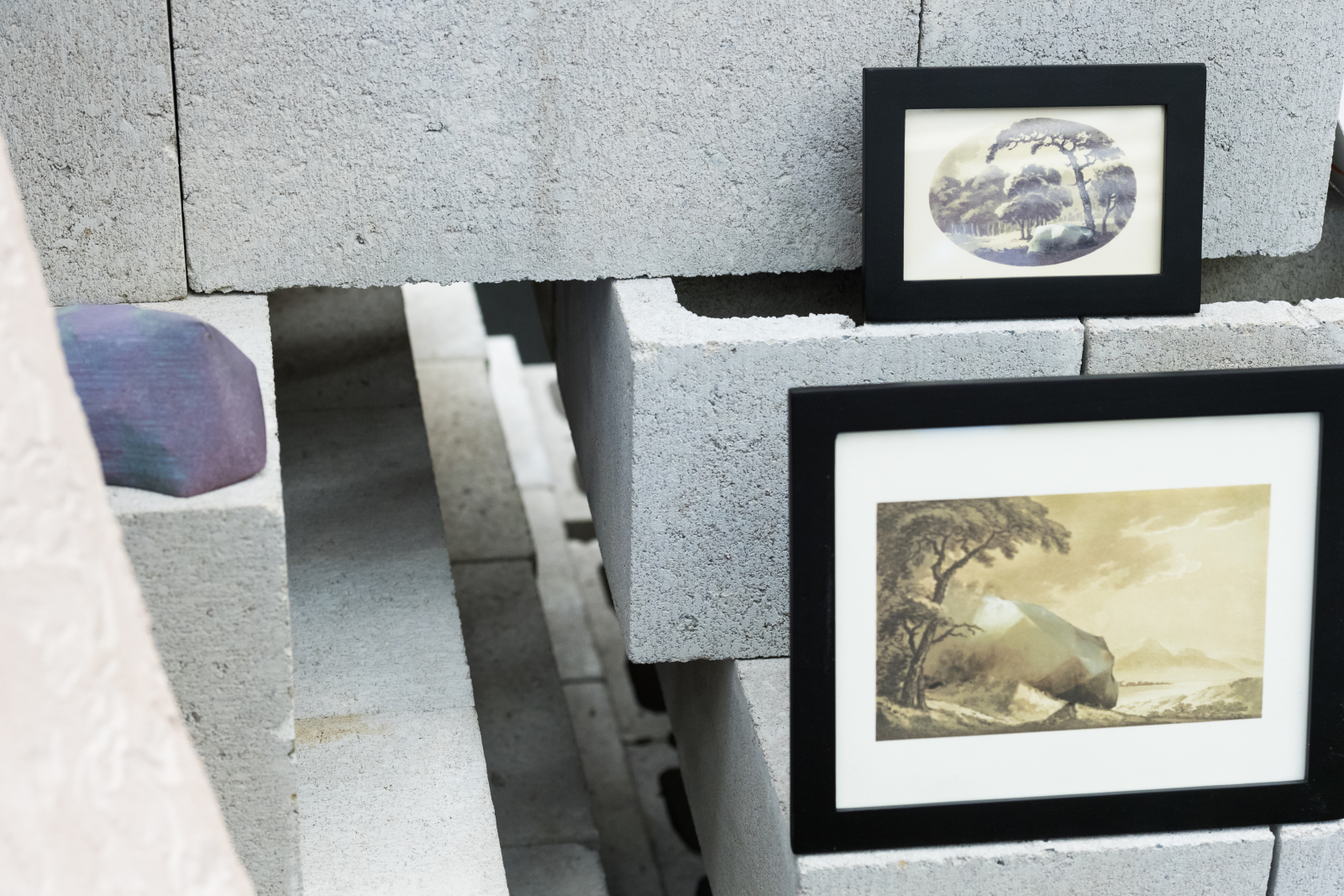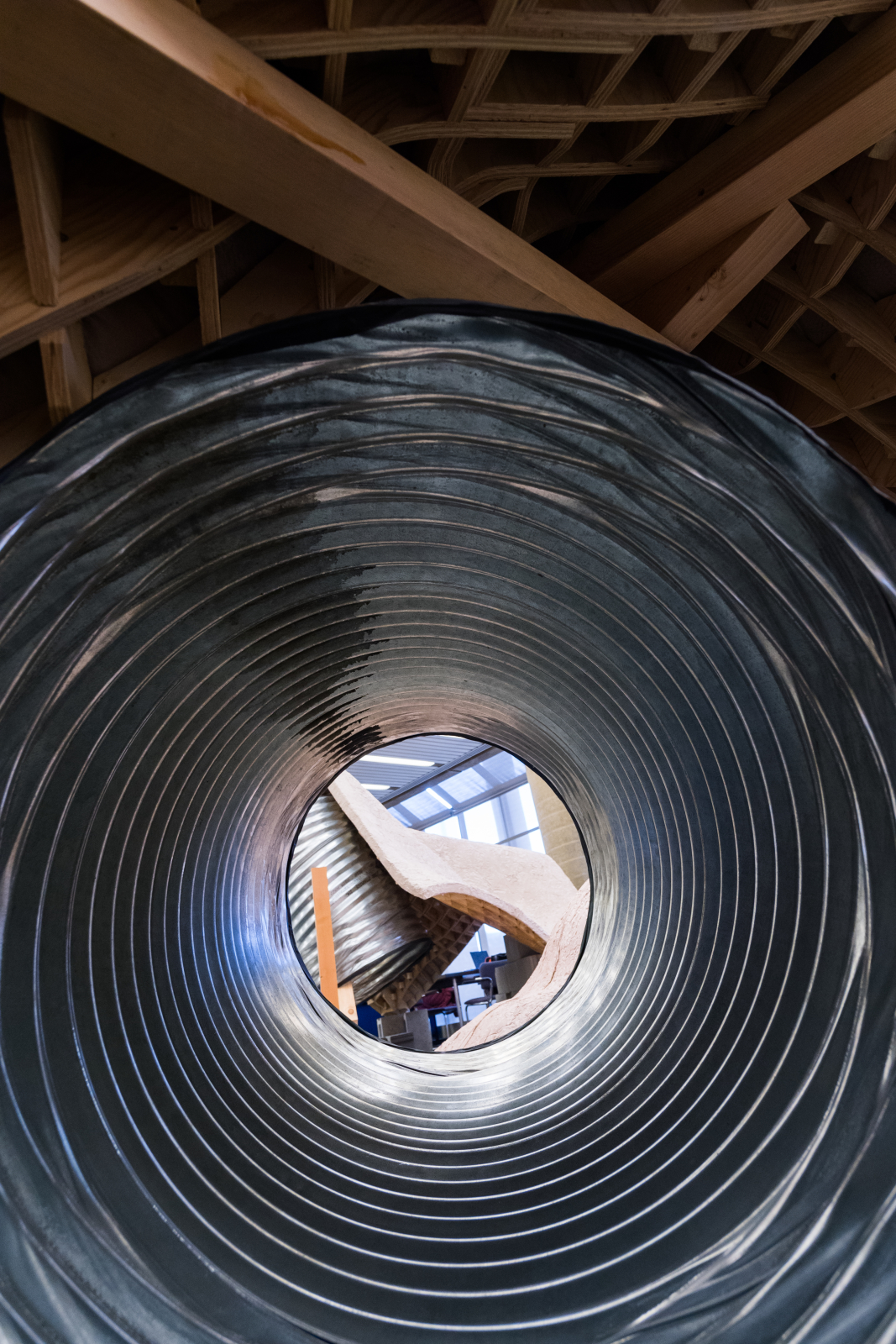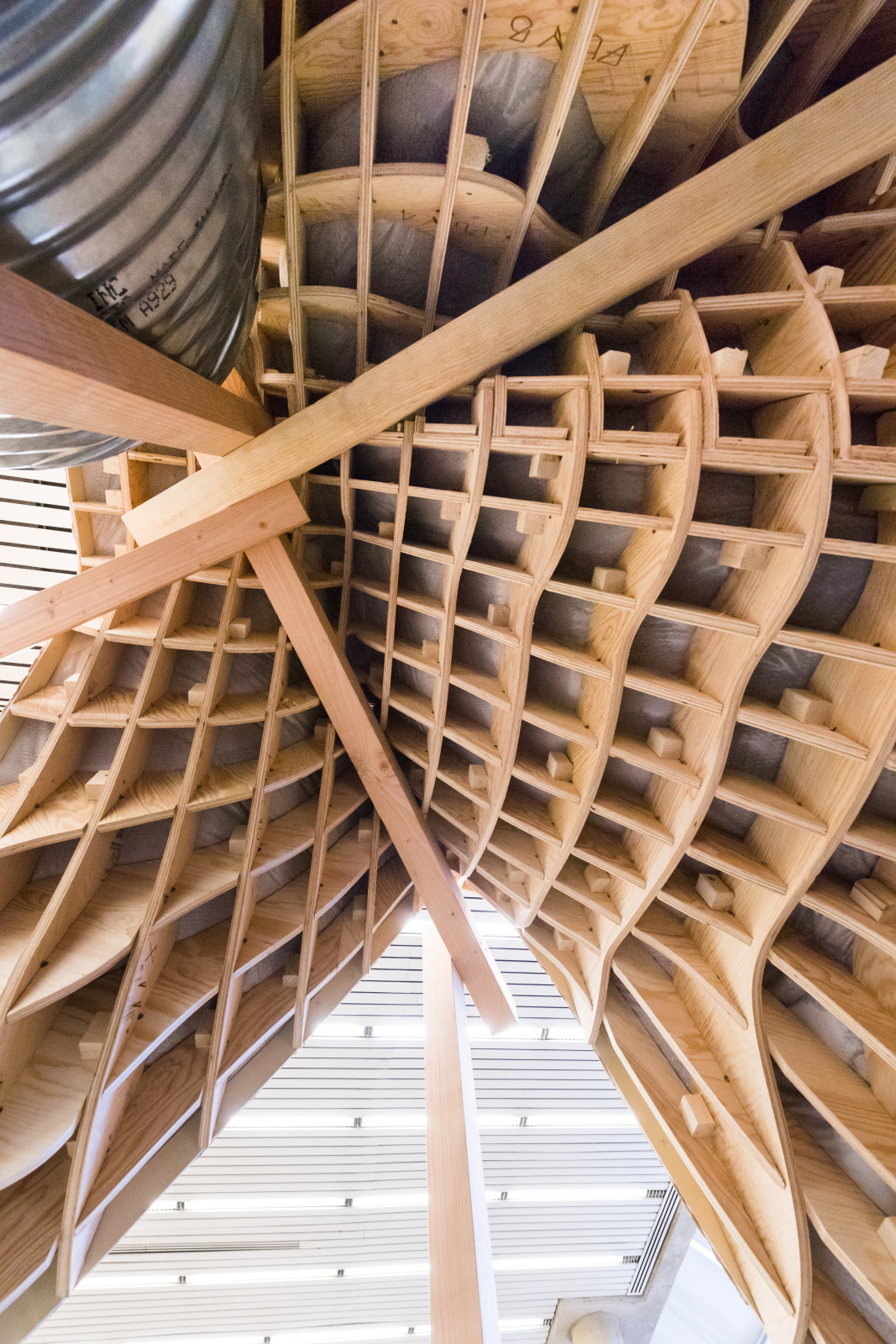To a modern audience, the 18th-century aesthetic ideal known as the “picturesque” may seem obscure outside the confines of museums and art history departments. Its philosophy, however—to capture not reality, necessarily, but rather a particular form of aesthetic beauty most appealing in a picture—underlies much of how people communicate in the social-media era.
So what happens when 21st-century design is filtered through the language that writers from 200 years ago used to define the picturesque landscape? Harvard University Graduate School of Design associate professor of architecture Andrew Holder and his firm The Los Angeles Design Group (LADG) explored this concept through a pair of exhibitions that challenge contemporary assumptions about the relationship between architecture and its audience.
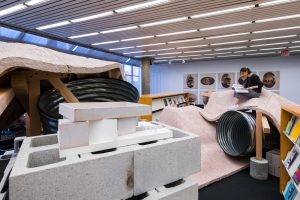
The Kid Gets Out of the Picture comprises two interactive installations located this fall at the GSD’s Frances Loeb Library and the Los Angeles nonprofit Materials & Applications. While the structures are not exact replicas—the Los Angeles installation is the largest piece to have ever occupied Materials & Applications’ outdoor courtyard, while the Harvard version is much smaller and sits inside a library—the designs are related. Both use plywood, concrete, plaster, and steel culvers to create an undulating landscape that invites new understandings of form and space.
“We want to return to the scene of the picturesque and think about ways of building that might complicate or resist an easy relationship between architecture and its pictures,” says Holder, who curated the shows with The LADG.
Too small to inhabit yet too large to be mere studies, both structures give the impression of being oversized architectural models. Viewers are invited to climb atop, underneath, or inside, creating new vantage points at every turn, but neither one has an obvious front or back making them difficult to draw or photograph.
“To the extent that contemporary architecture is ‘in the picture,’ we want to think about what it would mean to ‘get out,’” explains Holder, referring to the show’s title, a nod to the Robert Evans film “The Kid Stays in the Picture.”
The designs are inspired by the vocabulary of the English picturesque, which used a catalogue of terms (clumps, lumps, hollows, and masses, to name a few) to describe the three-dimensional nature of elements that existed only ever in the two-dimensional space of artwork. William Gilpin, the eighteenth-century English clergyman and artist who helped to define the picturesque, articulated the concept as “that peculiar kind of beauty, which is agreeable in a picture” (Essay on Prints, 1768). For Holder, Gilpin’s words are still relevant. “Despite the passage of more than 200 years, this is a good way to think about some of the preoccupations of contemporary architecture,” he says. “We build the real so that it can be photographed and disseminated in the form of pictures. In a certain sense the picture is more important than the actuality of the building.”
Contradiction is a theme that runs throughout the show. While most of the materials used are in their raw form, giving the installation an aggressively tactile feel, the plaster that sits atop the plywood frame is molded in such a way that it seems to drape the structure as would a blanket, its light pink color accentuating a perceived softness of the fabric-like folds. “There is a sense that the physics of these folds, their apparent suppleness, weight, and responsiveness to gravity is not the same as the set of physics that applies to everything else,” says Holder. “We are fascinated with ways in which we can make people aware of that—of its quality of being ‘different,’ and of being a ‘thing’ or ‘entity.’”
The exhibit’s scalar indeterminacy also pushes viewers to confront contradiction in architecture. For example, the steel culvers appear small and toy-like from a distance, but are actually three feet in diameter and can accommodate an adult easily. “I would like for these model-like qualities to engender a sense of projective possibility,” says Holder. “How can we live our lives in the presence of building form? And how can this become subject to a continual reconsideration and renewal?”
Despite the two structures’ drastically different scales and settings, visitors have found ways to interact with both. At the GSD, the smaller library installation is accompanied by prints of Gilpin’s drawings and situated near primary-source materials on the English picturesque as a means of inviting comparison and discourse. The GSD played host to an event this fall on the picturesque that took place in the library among the installation. In addition, some students have taken to reading in the spaces beneath the structure’s plaster roof, as well as on the topmost perches of the object. In Los Angeles, interaction has been more physical as the larger version allows for considerably more exploration. “People climb all over it and hang out in the grotto underneath,” says Holder. “Children behave like mountain goats on it.”
Perhaps not surprisingly, the installation process in Los Angeles differed substantially from that in Cambridge. On the west coast, the team hired a professional contractor and approached the project like a small residential construction job. At Harvard, due to the desire to locate the structure as close to the library’s special collections as possible, the team worked closely with staff to determine what could happen in the space. Initial construction was done in the Gund Hall Shop, while assembly—including that of the structure’s plywood “waffle grid”—was done off-site at a makerspace in Somerville. The entire installation was mocked up at the Gund Hall loading dock before being transferred by a seven-person crew into the library.
The Kid Gets Out of the Picture is part of a series of projects by Holder and The LADG using the English picturesque as a point of departure. In 2014, Holder curated a show at the University of Michigan’s Taubman College Gallery that showcased rare illustrated manuscripts on picturesque landscapes from the U-M Library’s special collections. Relatedly, two essays by Holder that explore the relationship between the South German Rococo and contemporary design were recently published in Harvard Design Magazine #43 and Log #38.
While The Kid Gets Out of the Picture closes its exhibition at the GSD on December 23, it is on view until January 8, 2017 at Materials & Applications in Los Angeles. The GSD exhibition received generous support from the Harvard Provostial Fund for the Arts. Both versions of the project were supported by a grant from the Graham Foundation.
